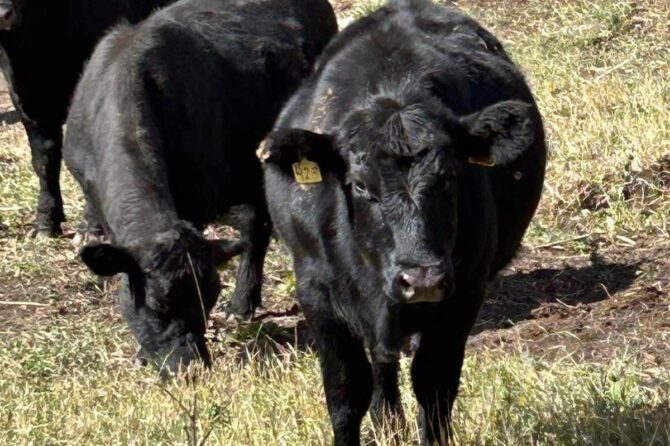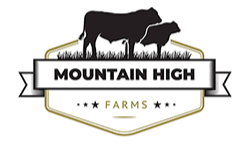
How Much Does an Angus Cow Weigh and Why It Matters for Meat Quality
When it comes to premium beef, the weight of an Angus animal is far more than just a number—it’s directly tied to meat yield, tenderness, and flavor. For farmers, chefs, and consumers alike, understanding the live weight of Angus cattle helps estimate how much meat can be obtained after processing (from live weight to carcass and cuts) and ensures menu consistency while maintaining the breed’s high-quality reputation.
How Much Does an Angus Cow Weigh?
Angus cattle are naturally muscular and well-marbled, making them one of the most sought-after beef breeds in the world. On average:
- A mature Angus cow weighs around 450–590 kg (live weight).
- Angus bulls can reach 820 kg or even more.
Weight depends on genetics, body condition score (BCS), age, diet, and pasture quality. Cattle raised on nutrient-rich temperate pastures develop stable muscle mass and ideal marbling, resulting in more flavorful meat. The typical dressing percentage (carcass weight relative to live weight) ranges from 58–63%, while retail cuts usually make up around 65–75% of the carcass, depending on the cutting method, whether the meat is bone-in or boneless, and the fat cover.
Meat Yield at Different Live Weights
- Live weight: 500 kg → carcass: approx. 300 kg (60%) → retail cuts: approx. 210 kg (70%)
- Live weight: 550 kg → carcass: approx. 330 kg (60%) → retail cuts: approx. 231 kg (70%)
- Live weight: 600 kg → carcass: approx. 360 kg (60%) → retail cuts: approx. 252 kg (70%)
| Live Weight (kg) | Carcass (60%) | Cuts (70% of carcass) |
|---|---|---|
| 500 | 300 | 210 |
| 550 | 330 | 231 |
| 600 | 360 | 252 |
Age and Weight: Finding the Flavor Balance
Weight determines how much meat you get, while age affects tenderness, connective tissue development, and flavor intensity. Finishing strategy (pasture-finished vs. grain-finished), transport stress, and aging method (dry or wet) also shape the final taste and texture of the beef.
- At 12–24 months: Young Angus cattle produce tender, mild-flavored meat—ideal for premium steaks and roasts. When finished properly, intramuscular fat (marbling) enhances juiciness.
- Over 24 months: Older and heavier animals yield more meat with a deeper, richer flavor and slightly firmer texture. Proper finishing and aging balance tenderness while preserving depth of taste.
Achieving the right balance between age and weight is key to producing meat that’s both juicy and flavorful. In premium beef production, the “golden middle” is that ideal weight where marbling develops fully without excessive fat accumulation.
Why Angus Weight Matters for Meat Yield
A heavier, well-finished animal provides more meat, but quantity alone doesn’t equal quality. The finest Angus beef comes from animals that have reached an optimal balance between live weight and fat distribution, resulting in:
- Uniform marbling for tenderness and juiciness across premium cuts.
- Predictable results when cooking—from steaks to slow-cooked cuts.
- Consistent flavor, with the right fat-to-meat ratio in both steaks and burgers.
For chefs and butchers, the animal’s weight and finishing determine portion sizes, cut consistency, and menu cost control. A properly finished Angus at the right weight delivers uniform ribeye, striploin, and tenderloin cuts—with minimal waste and a beautiful plate presentation.
The Mountain High Farms Advantage
At Mountain High Farms, Angus cattle are raised in high-altitude alpine pastures, grazing on wild herbs, clovers, and diverse native grasses. This biodiversity and cool climate promote steady weight gain and even marbling without excess fat. Low stress and carefully managed finishing ensure optimal dressing percentages and top-quality carcasses.
- Exceptional tenderness and rich flavor thanks to intelligent finishing and precise aging.
- Nutrient-rich meat with a favorable fatty acid profile compared to exclusively grain-finished beef.
- Full traceability—from pasture to plate—so chefs and consumers know exactly where their beef comes from.
The farm practices regenerative grazing—rotational pasturing with rest periods and soil health at the core. This enhances soil vitality, boosts biodiversity, and supports long-term sustainability, all while maintaining ideal weight targets and premium meat quality standards.
Conclusion
Understanding the weight of an Angus animal is essential not just for farmers but for anyone who values premium beef. Balancing age, genetics, finishing, and live weight ensures the tenderness, juiciness, and depth of flavor that make Angus renowned worldwide.
By choosing Angus beef from Mountain High Farms, you’re not only enjoying exceptional taste but also supporting sustainable agriculture, ethical farming, and the preservation of Armenia’s mountain pastures. Every steak, roast, or burger reflects thoughtful weight management, natural grazing, and respect for both the land and the animal.
Written by Ashot Poghosyan for Mountain High Farms
Leave a reply


Leave a reply